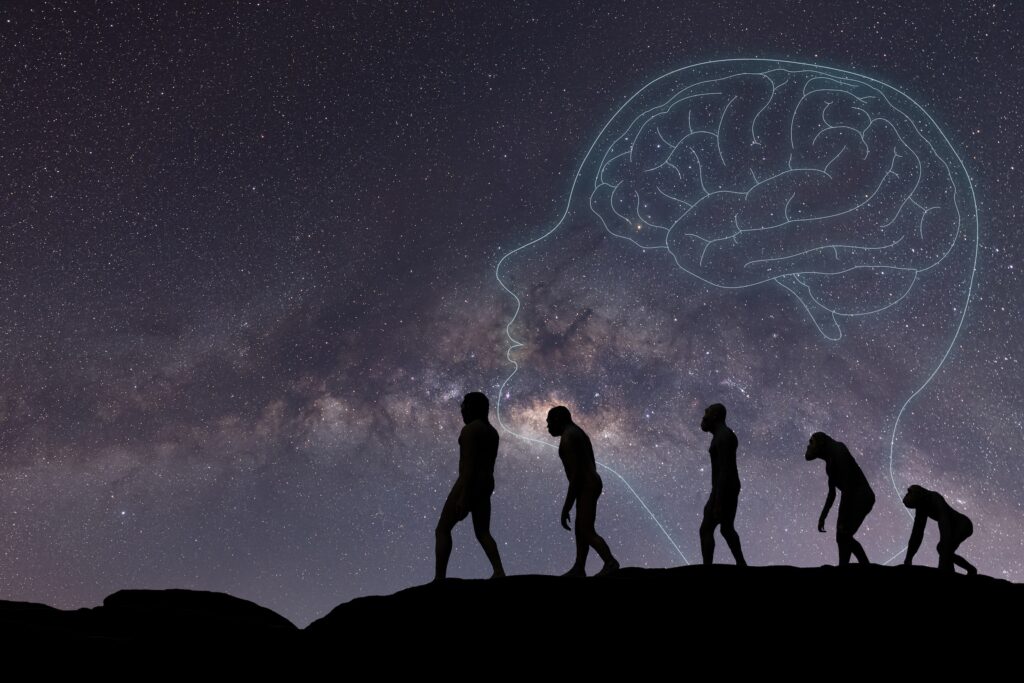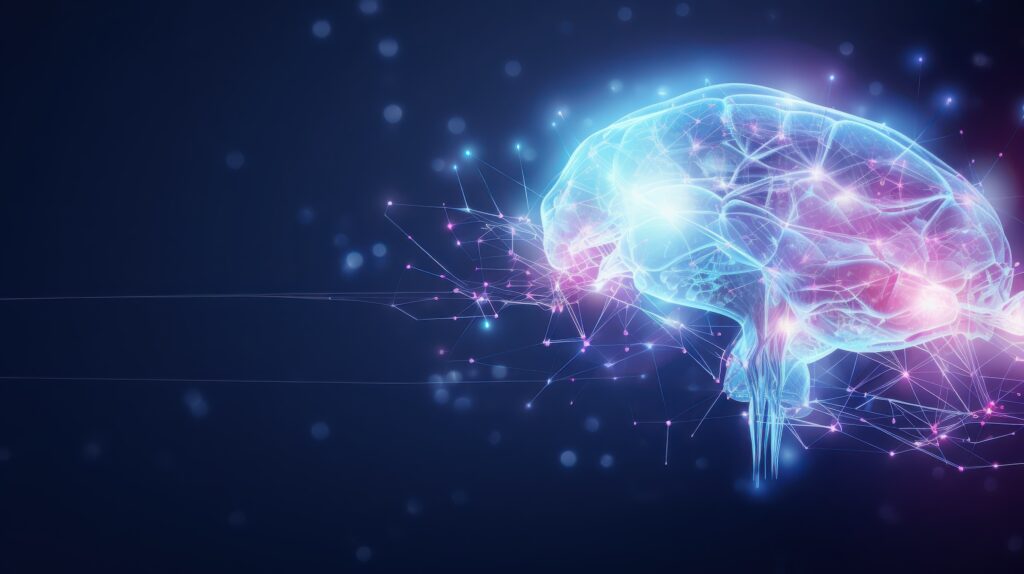The spirit of the universe
Reading | Ontology
![]() Steve Taylor, PhD | 2021-11-28
Steve Taylor, PhD | 2021-11-28

The gap between panpsychism and idealism is bridged if one infers that fundamental consciousness, instead of being a property of elementary material particles, pervades the fabric of space itself, from where it is then canalized into living beings. In this essay, Prof. Taylor limits himself to presenting his philosophy of panspiritism, as opposed to providing an argument for it. We believe this presentation appeals to enough intuition to justify its standalone publication.
In recent years, it has become increasingly clear that materialism – our culture’s standard view of reality – is inadequate as a way of explaining the world and human experience. As well as being fundamentally nihilistic, materialism can’t offer viable explanations of phenomena such as human consciousness, the effect of the mind on the body, altruism, near-death experiences, psi phenomena and even evolution.1 As a result, a number of “post-materialist’ philosophical approaches have been put forward as alternative explanations of the world, including varieties of idealism, panpsychism, and dual-aspect monism.
In this article, I would like to propose another nonmaterialist perspective, which I call panspiritism. It is an approach that—in different variants—has a long and rich philosophical history. Here I will set out some of the most salient features of the approach, then suggest how a contemporary panspiritist perspective conceives of the emergence of mind, the relationship of mind to matter, and the relationship between the mind and the brain.
An overview of panspiritism
Panpsychism suggests that the most basic particles of matter have some form of inner being, and some form of experience, even if this is so basic that it is impossible for us to conceive of it. Panpsychism may literally mean that “mind is everywhere,” but usually this just means that mind exists in all material particles. However, panspiritism suggests that there is a fundamental quality, which is inherent in all space as well as in all material things. This quality—which could be called fundamental consciousness (or spirit)—is all-pervading. (For me, the terms fundamental consciousness and spirit are equivalent.) It is everywhere and in everything, a subtle and dynamic nonmaterial principle or quality, which existed prior to the universe and gave rise to it. It enfolds and immerses the whole universe (and possibly other universes), pervading all space-time and matter and continually flowing into the inner being of life forms.
In contrast to panpsychism, panspiritism does not hold that all material particles have an intrinsic nature of matter. Panspiritism suggests that although consciousness is in all things, all things do not necessarily have their own individuated consciousness. Although fundamental consciousness pervades everything, all things are not conscious. Only structures that have the necessary complexity and organizational form to canalize fundamental consciousness into themselves have consciousness as their intrinsic nature. There is a similarity here with cosmopsychism, which assumes one essential form of consciousness: cosmic consciousness. As in idealism, the individual consciousness of macrosubjects such as human beings somehow derives from cosmic consciousness. Panspiritism suggests that this derivation occurs through organized groups of cells (in the form of brains in human beings), which act as a receiver and transmitter of fundamental consciousness.
According to panspiritism, the entire universe is animate and conscious, since all things are—and all space is—pervaded with fundamental consciousness or spirit. But there is a difference in the way that rocks and rivers are animate and the way that an insect or even an amoeba is animate. Rocks and rivers don’t have their own psyche and so aren’t individually conscious or animate. Fundamental consciousness pervades them, but they aren’t conscious in themselves. Material forms are externally animated with fundamental consciousness; the bodies of life forms are also animated with fundamental consciousness, but life forms are also internally animated with some degree of individual consciousness. Interior consciousness doesn’t go all the way down, as panpsychism suggests. It only goes as far down as the first simple life forms.
Briefly summarized, we could say that my variant of panspiritism highlights three ways in which living beings are related to fundamental consciousness: pervasion, immersion, and subjective sentience (or internal animation). Nonliving things are pervaded with and immersed in fundamental consciousness. Living things are also pervaded with and immersed in fundamental consciousness—but in addition, they are internally animated by fundamental consciousness, through the process of canalization (which will be discussed in more detail shortly), providing them with subjective sentience. And, since living beings exist in different levels of complexity, fundamental consciousness internally animates them to different degrees of subjective sentience.
Why is it necessary to see matter as pervaded with spirit? Couldn’t we simply see matter and spirit as wholly distinct, in dualistic terms? However, panspiritism is a philosophy of oneness (although at the same time it is not wholly monist). It is the all-pervading nature of fundamental consciousness that brings all phenomenal things into oneness—not simply the oneness of living beings who share the same essential internal consciousness, but also the oneness of all nonmaterial things, which are one because they are products of, and are pervaded with, fundamental consciousness. Certain interactions of the mind and the body (such as the influence of mental intentions over the form and functioning of the body, as illustrated by the placebo effect or healing under hypnosis) would be inexplicable without an intimate interconnection between the mental and physical.2 A sense of unity—or at least intimate connection— between one’s own being and the material world is also one of the core elements of mystical experiences. Significantly, mystical experiences also sometimes feature reports of a radiance or energy, which pervades all space and objects, bringing them into oneness.
One might also wonder: how can matter have a different ontological status to fundamental consciousness and yet be pervaded with it? How can matter be both of the same nature as spirit and different to it? However, it is important to remember that matter consists primarily of space. Nuclei are around 100,000 times smaller than the atoms that contain them. All space is pervaded with fundamental consciousness, so the space within matter (strictly speaking, the space within atoms) is pervaded with fundamental consciousness too.
We should also remember that, in the natural world, it is common for one phenomenon to generate another, in such a way that the generated phenomenon has its own ontological status but is also of the same nature as the generative phenomenon. The relationship of material particles to fundamental consciousness may be analogous to children created by parents, or plants that emerge from seeds, where a distinct phenomenon emerges from a preexisting one, but retains the essential nature of the latter.
Panspiritist perspectives
Of course, what I am here describing as panspiritism is by no means a novel perspective. In fact, the idea that the essence of reality is a nonmaterial, spiritual quality seems to be one of the oldest and most common cross-cultural concepts in the history of the world.
In addition to their animistic beliefs in spirits that could inhabit and influence phenomena, many indigenous groups developed concepts of a fundamental spiritual principle, which has some similarity with panspiritism. For example, many native American groups developed concepts of a “great spirit” or “great mystery.” The Tlingit of the Pacific North-West refereed to this spiritual principle as yok, the Hopi Indians called it maasauu, the Pawnee called it tirawa, the Dakota called in taku wakan, the Lakota called it wakan-tanka, while the Haudenosaunee called it orenda, the eastern Algonquians called it manitou, and so on. Elsewhere in the world, the Ainu of Japan—an indigenous tribal people of Hokkaido in Northern Japan—developed a similar concept of ramut, while in parts of New Guinea there was a similar concept of imunu. The similarity of these concepts with each other and with the panspiritist concept of a fundamental spiritual force is striking (and demands further investigation than I am able to devote to it here3).
Panspiritist ideas have clearly been a feature of certain Eastern philosophical traditions too. Many spiritual traditions feature concepts of an all-pervading spiritual force, such as the brahman of the Upanishads, the Tao of Taoism, the dharmakaya of Buddhism, Plotinus’s concept of “The One” and the Kabbalistic concept of en sof. These concepts differ in some senses, but all refer to a fundamental and universal spiritual principle, similar to what I refer to as fundamental consciousness.
The Indian philosophical tradition that allies most closely with panspiritism is Bhedabheda Vedanta. This approach can be seen as an attempt to integrate the monist and dualist traditions of Indian philosophy. The term Bhedabheda literally means “difference and non-difference,” suggesting that material forms are both identical and distinct to brahman. Like Kashmiri Shaivism, Bhedabheda Vedanta describes the phenomenal world as a real manifestation (or parinama) of a fundamental spiritual principle (brahman). But Bhedabheda goes further than Kashmiri Shaivism, by suggesting that material forms are not identical with absolute consciousness, but have their own distinct identity (while at the same time existing in brahman). In Bhedabheda Vedanta, various metaphors are used to illustrate the relationship between fundamental consciousness and material forms, including a wave and the ocean, a fire and the sparks that arise from it, the sun and its rays, and a father and his son. Individual subjects and material forms are of the same nature as brahman, but have their own distinct form and identity. This is an identical perspective to panspiritism, which sees material things are distinct from fundamental consciousness, at the same time as being pervaded with it and grounded in it.
(Note that there are some panspiritist trends within the western philosophical tradition too—for example, the Stoics, Plotinus, the Italian sixteenth-century philosophers Bruno and Patrizi, and later figures such as Spinoza and Johann Gottfried Herder. Unfortunately, I do not have space to discuss this here. See my book Spiritual Science for a fuller discussion.)
The emergence of matter
In panspiritism, there are two distinct developmental stages: the emergence of matter and the emergence of mind.
I suggest that fundamental consciousness has a dynamic quality that enabled it to generate the physical universe. There is a similarity here with some forms of “source idealism” (or “product idealism”), which see the world as an emanation of absolute consciousness. Some forms of panpsychism imply that consciousness came into existence with the universe, as one of the properties of subatomic particles (alongside others such as mass and charge) or as the intrinsic nature of matter. But panspiritism suggests that fundamental consciousness is more fundamental than the universe, in the sense that the universe came into being as an emanation of it.
In Kashmiri Shaivism, the universe came into being through the primordial vibration of siva. Kashmiri Shaivism claims that siva has a dynamic impulse to express—in Wallis’ words—“the totality of its self-knowledge in action.”4 Plotinus is also very clear that the One is the source of the world, as a dynamic force which is—in Plotinus’ own words—the “productive power [dynamis] of all things.”5
I admit that the process by which fundamental consciousness generates matter is obscure. One could term this the “generation problem” in parallel with the “combination problem” of panpsychism. Panpsychism faces the challenge of explaining how the subjectivity of single material particles combine to produce the more intense consciousness of larger beings. Likewise, idealism faces the problem of explaining how absolute consciousness manifests itself in discrete living organisms. Chalmers terms this the “fragmentation problem” of how universal mind divides into individual minds.6 Kastrup refers to the condition of dissociative identity disorder, in which consciousness fragments into different personalities.7 However, it is not clear to me whether this is a mere analogy, or whether it is meant to describe the actual process by which individual consciousness arises from universal consciousness.
According to panspiritism, once the universe was generated, the creative and dynamic quality of spirit continued to operate in material structures. After arising from fundamental consciousness, material particles grouped together into more complex material structures, and eventually into structures that were complex enough to enable the “canalization” of fundamental consciousness into themselves, so that these structures became animate and sentient. From that point on, the creative and dynamic nature of fundamental consciousness was an important factor in evolution, impelling life forms to develop greater complexity over time. This allowed those life forms to canalize consciousness more intensely, and so to develop a more intense and expansive internal consciousness. Living beings became more sentient and autonomous, while still immersed in and pervaded with fundamental consciousness.
The emergence of mind
The “canalization” process mentioned above is main principle of panspiritism’s account of the emergence of mind. In these terms, the human mind is essentially an influx (or canalization) of fundamental consciousness. The brain receives fundamental consciousness and canalizes it into our individual being, so that we become individually conscious.
This view is similar to the transmission model of consciousness put forward by William James, who compared the brain to a “prism or a refracting lens,” which transmits a white light or invisible radiance.8 (James also used the metaphor of air passing through the pipes of an organ.) Forman has described this process more specifically, speaking in terms of a “canalization” of consciousness. As he has put it, “Consciousness is more like a field than a localized point, a field which transcends the body and yet somehow interacts with it … Brain cells may receive, guide, arbitrate, or canalize an awareness which is somehow transcendental to them. The brain may be more like a receiver or transformer for the field of awareness than its generator.”9 Panspiritism holds essentially the same view.
It is important to point out that the process of canalization of fundamental consciousness doesn’t just occur via the brain. The brain is the most complex cellular structure in the body, and so is the main receiver of consciousness. However, all of the cells in our body receive and transmit fundamental consciousness. Indeed, one the of the basic functions of all cells is to canalize fundamental consciousness. This is why we can sense consciousness flowing throughout our inner being, as life-energy, or chi.
It is also important to note that canalization isn’t just a human phenomenon. The process occurs in all life forms. In fact, canalization is one of the distinguishing features between non-living and living structures. Physical structures became internally conscious and sentient when they have developed sufficient complexity to canalize fundamental consciousness into themselves. When matter is arranged in complex and intricate ways—such as in cells and organisms—it facilitates the canalization of fundamental consciousness. Even an amoeba has its own very rudimentary kind of psyche and is therefore individually alive.
This relates to the different degrees of consciousness in life forms. As living beings become more complex—as their cells increase in number and become more intricately organized in groups—they become capable of receiving more consciousness. The raw essence of fundamental consciousness is canalized more powerfully through them, so that they become more alive, with more autonomy, more freedom, and more intense awareness of reality. This is why human beings, with our incredibly complex and intricate brains, are one of the most conscious beings (perhaps alongside dolphins and whales) in existence. However, the simplest forms of matter, which do not have cells, are not capable of canalizing consciousness, and so they are not individually conscious or alive. Simple forms of matter do not have an interior and are not capable of experience or sensation. These qualities only emerge at the cellular level and above.
In human beings, once the “raw material” of fundamental consciousness has been canalized, the brain enables and organizes the various psychological functions and processes that constitute the mind, including memory, information processing, intention or will, concentration, abstract and logical cognition, and so on. In this way, the brain is the facilitator (but not the causal generator) of mind. The relationship of fundamental consciousness to mind is like the relationship between a raw food ingredient and a meal that is prepared from it. Fundamental consciousness constitutes the essence of mind, but it is not equivalent to mind. Mind is what happens when fundamental consciousness is filtered through neural networks.
Another significant point is that canalization is an ongoing process. Life forms continually receive and canalize fundamental consciousness, for every moment of their lives till death. For me as a human being, fundamental consciousness is continually flowing into me like a fountain (to use Plotinus’ metaphor) via my brain and through the cells of my body, generating my inner life. From this point of view, death can be seen as the point where the brain and body are no longer able to receive and canalize fundamental consciousness. Due to a process of decay, or an accident or injury, their organism can no longer perform the canalizing role.
Conclusion
Unfortunately, I don’t have space here to examine one of the most important aspects of panspiritism: its explanatory power. In addition to offering explanations of the nature of consciousness and the relationship between mind and matter, panspiritism has explanatory potential in areas such as altruism, the influence of the mind over the body, mystical experiences, psi experiences and evolution. (Again, see my book Spiritual Science for more details.)
Of course, panspiritism has some problematic issues, such as the “generation problem” of how matter arises out of fundamental consciousness, and what might be called the “canalization problem” of how cells canalize fundamental consciousness. However, I don’t think these issues are any more serious than the combination problem of panpsychism and the fragmentation problem of idealism or cosmopsychism. Although there are still many details left to fill in, I think that panspiritism has great promise as a metaphysical alterative to materialism.
References
- Kastrup, (2019). The Idea of the World: A Multi-Disciplinary Argument for the Mental Nature of Reality. Ropley: Iff Books; Taylor. S. (2018). Spiritual Science: Why Science Needs Spirituality to Make Sense of the World. London: Watkins.
- Kelly, E. F., Kelly, E. W., Crabtree, A., Gauld, A., Grosso, M. and Greyson, B. (2007). Irreducible Mind: Toward a Psychology for the 21st Century. Lanham, MD: Rowman & Littlefield.
- For a fuller discussion, see Taylor, S. (2005). The Fall: The Insanity of the Ego in Human History and the Dawning of a New Era. Ropley: O Books
- Wallis, (2013). Tantra Illuminated: The Philosophy, History, and Practice of a Timeless Tradition. San Rafael, CA: Mattamayura Press, p.55.
- in Marshall, P. (2019). The Shape of the Soul. Lanham, MD: Rowman & Littlefield, p. 256.
- Chalmers, D. (2020). “Idealism and the Mind-Body Problem.” In The Routledge Handbook to Panpsychism, edited by W. Seager, 353–73. London: Routledge. http://consc.net/ papers/idealism.pdf
- Kastrup, B. (2019). The Idea of the World: A Multi-Disciplinary Argument for the Mental Nature of Reality. Ropley: Iff Books
- James, W. (1898/1992). “On Human Immortality”, In William James: Writings 1878 – 1899, edited by E. M. Gerald, 1100–27. New York: The Library of America.
- Forman, R. (1998). “What Does Mysticism Have to Teach Us About Consciousness?” Journal of Consciousness Studies 5, 85–201, p. 185.

Essentia Foundation communicates, in an accessible but rigorous manner, the latest results in science and philosophy that point to the mental nature of reality. We are committed to strict, academic-level curation of the material we publish.
Recently published
Reading
Essays
Seeing
Videos
Let us build the future of our culture together
Essentia Foundation is a registered non-profit committed to making its content as accessible as possible. Therefore, we depend on contributions from people like you to continue to do our work. There are many ways to contribute.















